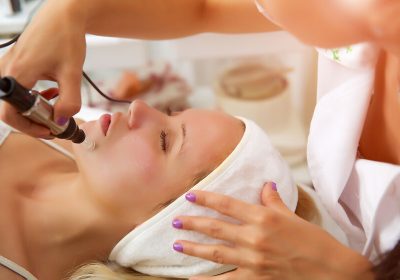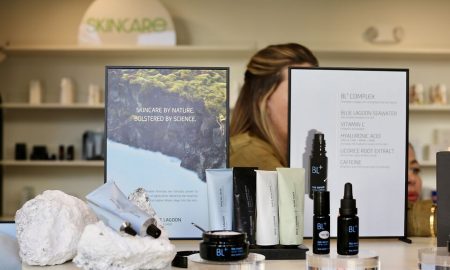Dealing with acne breakouts can be tough enough, but resulting scars can be especially difficult to handle. According to Michael Bontekoe, MS, PA-C of the Roxbury Institute in Beverly Hills, California, “The best way to prevent scars is to treat acne as soon as possible. Using prescription-based medications and some over-the-counter products (such as topical and oral retinoids, topical or oral antibiotics, oral contraceptives and anti-inflammatory acne treatments) can help.”
“Inflammatory cysts and nodules are usually the culprits for acne scarring, while whiteheads or blackheads rarely leave a permanent mark,” explains Bontekoe. When considering acne scar treatments, the first step is knowing the type of scarring you have.
- Ice pick scars: These are narrow, deep scars that extend deep within the skin.
- Rolling scars: These shallow depressions in the skin resemble small hills and valleys.
- Box car scars: This type of scar has well-defined oval- or square-shaped depressions with elevated edges.
- Keloid or hypertrophic scars: These scars are raised, stretched, thickened or discolored.
- Post-inflammatory hyperpigmentation (PIH): Flat red or brown scars (depending on a person’s skin tone) can result after acne breakouts resolve.
There are several effective office-based treatments that can help improve the appearance of post-acne scars—and the ideal treatment depends on the actual type of scar.
Lasers: “Lasers use a specific wavelength of light to stimulate the production of collagen and elastin within the skin,” Bontekoe says. Ablative lasers remove damaged skin while less-invasive vascular lasers can help destroy blood vessels beneath the skin to minimize red marks.
Best for: Rolling scars and post-inflammatory hyperpigmentation
Microneedling: This treatment uses a roller or pen with short, sharp needles to create channels in the skin that prompt collagen production as part of the healing process.
Best for: Rolling and box car scars
Injectable fillers: Ideal for elevating depressed scars to make them even with surrounding skin, temporary fillers can last for six to 12 months and semi-permanent fillers can last for up to five years.
Best for:Rolling scars
TCA CROSS: “This technique uses a high concentration of trichloroacetic acid (TCA) to chemically reconstruct acne scars by creating a localized inflammatory reaction that helps create new collagen,” says Bontekoe.
Best for: Ice pick and box car scars
Platelet-rich plasma (PRP): A patient’s own blood can be spun in a centrifuge to isolate platelets and growth factors that help prompt collagen production—and PRP can be added to treatments like microneedling or injected into the skin by itself.
Best for: Rolling and box car scars
Punch excision and subcision: Punch excision is a surgical procedure where a circular blade is used to cut out the affected acne scar, while subcision is a technique that involves inserting a needle under the skin to loosen scar tissue from the base of the skin.
Best for: Ice pick and rolling scars
Cortisone injections: A series of monthly injections can help soften and flatten raised scars caused by acne as well as surgery or injuries.
Best for: Keloid and hypertrophic scars
“Many patients ask if there are any at-home treatments for scars, but unfortunately there aren’t many that are effective,” explains Bontekoe. “A silicone scar gel may help keloid and hypertrophic scars, but it’s best to see a dermatology provider for recommendations that can help improve other types of acne scarring.” And is it true that pure vitamin E is an effective scar treatment? “This has been a popular treatment for decades, however research about its efficacy on burns and scars has been disappointing,” Bontekoe adds.
























